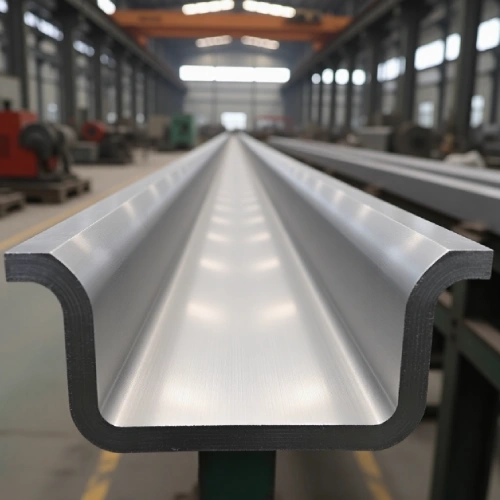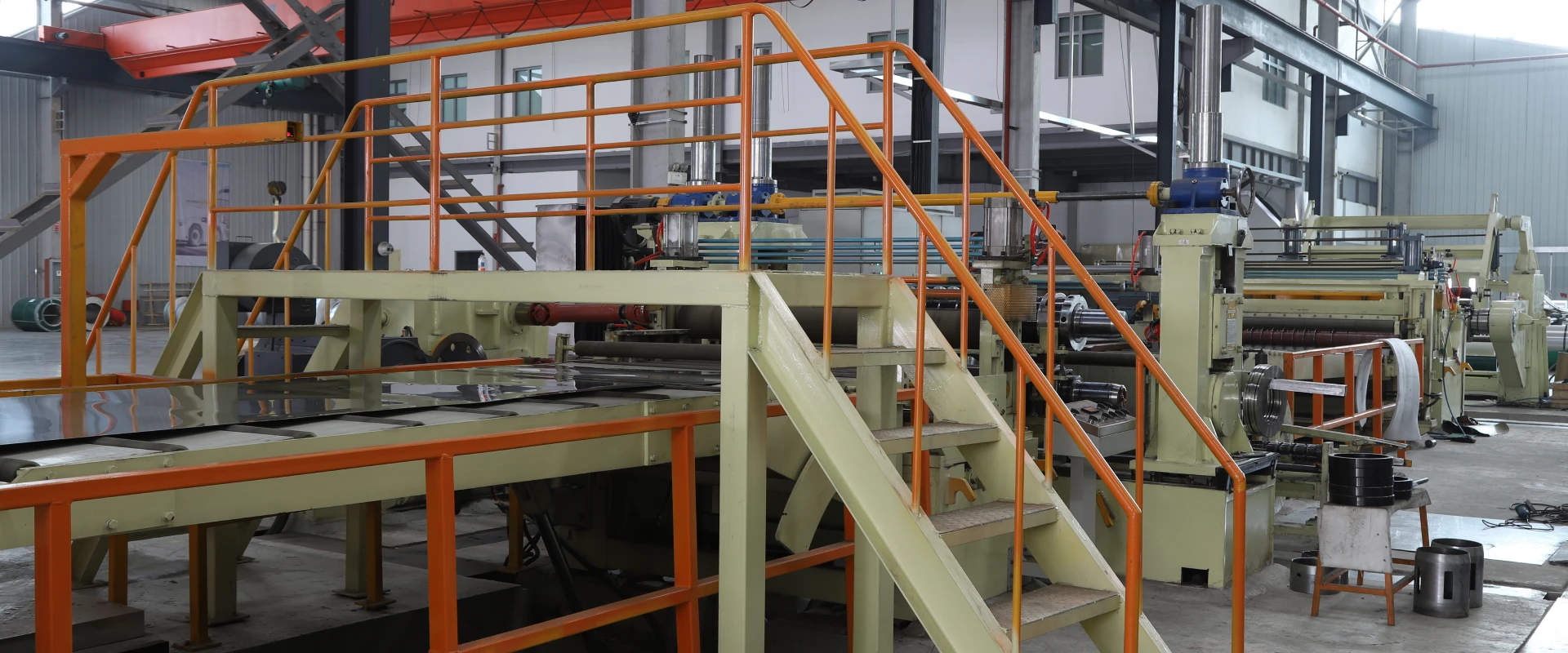Anti-Salt Spray Coating Selection for Titanium Alloy I-Beams in Offshore Platform Helicopter Decks
Stand on an offshore oil platform 100 miles from shore, and you’ll feel the ocean’s power: salt-laden wind whips at every surface, waves crash against the structure, and the sun bakes metal under an unforgiving sky. For the helicopter deck—the platform’s lifeline for crew transport, supplies, and emergencies—this environment is a death sentence for unprotected metal.

Titanium alloy I-beams are the backbone of these helicopter decks. They’re strong enough to handle the weight of a 10-ton helicopter, light enough to not weigh down the platform, and naturally more corrosion-resistant than steel. But even titanium isn’t immune to the ocean’s worst enemy: salt spray. Tiny salt particles in the air stick to the I-beams, absorb moisture, and form a corrosive solution that eats away at the metal’s surface. A North Sea oil platform learned this in 2022: Their uncoated titanium I-beams developed pitting corrosion after just 2 years, weakening the deck’s structure. They had to shut down helicopter operations for 3 weeks to repair it—costing $2 million in lost productivity. “We thought titanium was ‘maintenance-free,’” said the platform’s engineering manager. “But salt spray found a way to damage it. We needed a coating that could stand up to this environment.”
That’s where anti-salt spray coatings come in. The right coating acts like a shield, blocking salt, moisture, and UV rays from touching the titanium I-beams. But choosing the wrong one? It’ll peel off in months, leaving the metal unprotected. This article breaks down how to pick the best anti-salt spray coating for titanium I-beams in helicopter decks, what to test for, and why this small choice keeps offshore platforms running safely. We’ll use real platform stories, simple salt spray tests, and plain language—no confusing coating chemistry jargon, just what you need to keep your helicopter deck strong.
Why Titanium Alloy I-Beams Need Anti-Salt Spray Coatings (Even Though They’re Corrosion-Resistant)
First, let’s clear up a myth: Titanium is corrosion-resistant, but it’s not corrosion-proof—especially in offshore salt spray. Here’s what happens:
Salt spray lands on the titanium surface and forms a thin layer of brine (salt water).
Titanium naturally forms a thin oxide layer that protects it—but brine breaks down this layer over time, creating tiny holes (pitting) in the metal.
The helicopter deck adds extra stress: Every time a helicopter lands, it vibrates the I-beams, which can crack weak spots in the oxide layer. UV rays from the sun speed up this damage, making the metal even more vulnerable.
A test by the American Society for Testing and Materials (ASTM) showed the difference: Uncoated titanium I-beams exposed to continuous salt spray (simulating offshore conditions) developed pitting after 1.500 hours (about 2 months of real offshore use). Coated titanium I-beams? Some lasted 10.000+ hours (over a year) with no damage.
A materials scientist at a titanium manufacturer explained: “Titanium’s oxide layer is like a thin raincoat—it works in light rain, but in a saltwater storm, it gets worn down. An anti-salt spray coating is like a heavy-duty rain jacket with a hood—it keeps the worst of the weather out, so the oxide layer stays intact.”
Key Factors to Consider When Choosing an Anti-Salt Spray Coating
Not all anti-salt spray coatings are the same. For titanium alloy I-beams in helicopter decks, you need to check four critical factors—skip any of these, and the coating will fail:
1. Salt Spray Resistance (The Most Important Factor)
The coating’s main job is to block salt spray. Look for coatings that pass the ASTM B117 salt spray test—the industry standard for measuring corrosion resistance. In this test, samples are sprayed with a 5% saltwater solution (mimicking ocean air) at 35°C (95°F) for hundreds or thousands of hours.
For offshore helicopter decks, you need a coating that lasts 5.000+ hours in ASTM B117 with no rust, pitting, or peeling. A coating that only lasts 1.000 hours will need to be replaced every 6–8 months—costly and disruptive.
A Gulf of Mexico platform tested three coatings:
Coating A: Failed at 1.200 hours (peeled, small pitting on titanium).
Coating B: Passed 5.500 hours (no damage, coating still intact).
Coating C: Passed 8.000 hours (no damage, even after extra UV exposure).
They chose Coating C—“We didn’t want to be repainting every year,” said the maintenance chief. “Coating C gave us the peace of mind that it would last.”
2. Adhesion (How Well the Coating Sticks to Titanium)
A coating can be salt-resistant, but if it peels off the titanium, it’s useless. Helicopter decks vibrate every time a helicopter lands, so the coating needs to stick tightly—even under constant shaking.
To test adhesion, engineers use the ASTM D3359 tape test: They cut a grid pattern into the coating, apply a strong tape, and pull it off. A good coating will leave no flakes on the tape (rated “5B” on the ASTM scale—perfect adhesion).
A North Sea platform made a mistake with a cheap coating: It passed the salt spray test but failed the tape test (rated “2B”—flakes came off with the tape). After 3 months of helicopter landings, the coating peeled off in large strips. “Adhesion was the last thing we thought about,” said the engineer. “Now it’s the first thing we check.”
3. Impact Resistance (Handles Helicopter Landings)
Helicopter landings are rough—even a gentle touchdown creates a shock that can crack or chip a brittle coating. The coating needs to be flexible enough to absorb this impact without breaking.
Look for coatings that pass the ASTM D2794 impact test, which drops a weighted object onto the coating to simulate impact. For helicopter decks, you need a coating that handles at least 160 inch-pounds (in-lb) of impact (the weight of a small hammer dropped 1 foot) with no cracks.
A coating supplier in Houston explained: “Some coatings are hard but brittle—like a ceramic mug. Drop it, and it breaks. A good offshore coating is more like a rubber ball—drop it, and it bounces back. It needs to flex with the titanium when the helicopter lands.”
4. UV Resistance (Stands Up to Sunlight)
Offshore platforms get intense UV rays—no trees or buildings to block the sun. UV light breaks down some coatings, making them chalky and brittle over time. A coating that fades or cracks in the sun won’t protect the titanium for long.
Test for UV resistance with the ASTM G154 xenon arc test, which simulates years of UV exposure in weeks. A good coating will show less than 5% color fade and no cracking after 1.000 hours of testing.
A platform in the Arabian Gulf learned this: They used a coating that was salt-resistant but not UV-resistant. After 6 months in the sun, the coating turned white and started peeling. “We forgot about the sun,” said the maintenance team. “In the desert, UV is just as bad as salt spray.”
The 3 Best Anti-Salt Spray Coatings for Titanium I-Beams in Helicopter Decks
After talking to offshore engineers and coating suppliers, we found three coatings that check all the boxes—salt resistance, adhesion, impact resistance, and UV resistance:
1. Fluoropolymer Coatings (Best All-Around Choice)
Fluoropolymer coatings (like PTFE or PVDF) are the gold standard for offshore use. They’re made with fluorine-based molecules that repel water and salt—think of them like non-stick pans for titanium.
Salt spray resistance: 8.000+ hours in ASTM B117 (no damage).
Adhesion: 5B rating (perfect stick).
Impact resistance: 180 in-lb (handles heavy helicopter landings).
UV resistance: Less than 3% fade after 1.000 hours of UV testing.
Cost: 80–120 per square foot (more expensive upfront, but lasts 5–7 years).
A North Sea platform has used fluoropolymer coatings on their titanium I-beams for 6 years: “We inspect them every 6 months, and they still look new. No pitting, no peeling—just wipe off the salt, and they’re good to go.”
Best for: Most offshore helicopter decks—balances performance and longevity.
2. Ceramic-Metal Composite Coatings (Great for High-Impact Areas)
Ceramic-metal composite coatings mix ceramic (hard, salt-resistant) with metal (flexible, impact-resistant) for the best of both worlds. They’re thicker than fluoropolymer coatings (usually 20–30 mils vs. 5–10 mils) and can handle extra rough use.
Salt spray resistance: 6.000+ hours in ASTM B117.
Adhesion: 4B–5B rating (excellent stick).
Impact resistance: 200 in-lb (best for busy decks with daily helicopter landings).
UV resistance: Less than 4% fade after 1.000 hours.
Cost: 60–90 per square foot (lasts 4–6 years).
A Gulf of Mexico platform uses these in high-impact areas (like under the helicopter’s landing gear): “The composite coating takes a beating. We’ve had 500+ landings on that spot, and the coating still hasn’t chipped.”
Best for: Busy helicopter decks with frequent landings or rough weather.
3. Epoxy-Polyurethane Hybrid Coatings (Budget-Friendly Option)
Epoxy-polyurethane hybrids are cheaper than the other two but still offer good protection. They use epoxy (strong adhesion) and polyurethane (flexible, UV-resistant) to block salt and moisture.
Salt spray resistance: 5.000+ hours in ASTM B117.
Adhesion: 5B rating (perfect stick).
Impact resistance: 150 in-lb (good for light to medium use).
UV resistance: Less than 5% fade after 1.000 hours.
Cost: 40–70 per square foot (lasts 3–4 years).
A small offshore wind platform uses these: “We don’t have daily helicopter landings—maybe 2–3 a week. The hybrid coating works great for our needs, and it saves us money. We repaint every 3 years, which is manageable.”
Best for: Low-traffic decks or platforms on a budget.
Real-World Win: A Platform That Cut Maintenance Costs by 60%
Let’s look at how a large offshore oil platform in the Norwegian Sea (let’s call it “SeaPlatform”) switched to the right coating and transformed their maintenance routine. Before, they used a cheap epoxy coating on their titanium I-beams:
Coating failed every 18 months (peeled, titanium developed pitting).
Annual maintenance cost: $350.000 (repainting, repairing pitted titanium).
Helicopter deck downtime: 5–7 days per year (for maintenance).
Then they switched to a fluoropolymer coating:
Prep Work: They cleaned the titanium I-beams with a special solvent to remove old coating and salt, then sandblasted the surface to help the new coating stick.
Application: They sprayed two coats of fluoropolymer (total thickness 10 mils) and let it cure for 48 hours.
Testing: They did on-site adhesion tests (5B rating) and sent a sample to a lab for salt spray testing (passed 8.000 hours).
The results after 5 years:
Coating condition: Still intact, no peeling or fading.
Titanium condition: No pitting or corrosion.
Annual maintenance cost: $140.000 (only inspections and minor touch-ups—60% drop).
Downtime: 1 day per year (for inspections—85% drop).
“We used to dread helicopter deck maintenance,” said SeaPlatform’s operations director. “Now it’s a non-issue. The fluoropolymer coating paid for itself in the first year with the money we saved on repairs.”
How to Apply the Coating Correctly (Mistakes to Avoid)
Even the best coating will fail if applied wrong. Here are three common mistakes offshore teams make—and how to fix them:
1. Skipping Surface Prep (The #1 Mistake)
If the titanium surface has salt, oil, or old coating, the new coating won’t stick. You need to:
Wash the I-beams with a deionized water and mild detergent to remove salt.
Use a solvent (like acetone) to remove oil or grease.
Sandblast the surface with fine-grit sand (120–180 grit) to create a rough texture—this helps the coating grip.
A platform in Brazil skipped sandblasting: The coating stuck at first, but after 6 months, it peeled off. “We thought washing was enough,” said the painter. “Now we never skip sandblasting—it’s the most important step.”
2. Applying the Coating Too Thin (Or Too Thick)
Coatings need to be the right thickness—too thin, and salt can seep through; too thick, and it cracks when the titanium expands/contracts (from temperature changes).
Follow the supplier’s recommendation: Fluoropolymer = 5–10 mils; ceramic-metal = 20–30 mils; hybrid = 10–15 mils.
Use a “wet film thickness gauge” while applying to check thickness.
A platform in the North Sea applied a ceramic-metal coating too thick (40 mils): It cracked in cold weather, letting salt in. They had to strip it and reapply at the correct thickness. “Thicker isn’t always better,” said the engineer. “Stick to the supplier’s specs.”
3. Curing Too Fast (Or Too Slow)
Coatings need time to cure (harden) properly. Offshore weather can mess this up—high humidity slows curing; high heat speeds it up.
Follow the supplier’s curing guidelines: Most coatings need 24–48 hours at 15–30°C (59–86°F) and less than 80% humidity.
If it’s too humid, use a dehumidifier in the work area. If it’s too hot, shade the I-beams to slow curing.
A platform in the Arabian Gulf cured a hybrid coating in 12 hours (too fast, because it was 45°C/113°F outside): The coating never fully hardened, and it started peeling after 3 months. “We rushed it because we wanted to get the deck back in use,” said the team. “Now we plan curing around the weather.”
Common Myths About Anti-Salt Spray Coatings (Busted)
Let’s clear up three lies that stop offshore teams from choosing the right coating:
Myth 1: “Titanium Doesn’t Need a Coating—It’s Corrosion-Resistant”
As we saw, titanium’s oxide layer breaks down in salt spray. A coating adds a second layer of protection that keeps the oxide layer intact. Uncoated titanium will develop pitting in 1–2 years offshore—coated titanium lasts 5–7 years.
Myth 2: “The Most Expensive Coating Is Always the Best”
Fluoropolymer coatings are expensive, but they’re not the best for every platform. If you have a low-traffic deck, a hybrid coating will work just fine and save you money. The best coating is the one that matches your deck’s use (traffic, weather) and budget—not just the priciest one.
Myth 3: “Once the Coating Is Applied, You Can Forget About It”
Even the best coating needs inspections. Check it every 6 months for chips, peeling, or salt buildup. Wipe off salt regularly (with fresh water) to reduce stress on the coating. A 10-minute inspection can catch small issues before they become big problems.

